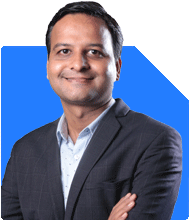I am 31 , married, one child ,working as a private school teacher , my salary is around Rs.28000 , my monthly expenses are Rs.12000-13000 and I have invested Rs.100000( half in one mid cap and half in one flexi cap mutual fund).
I want to invest one time in mutual funds whatever amount is needed upto 10 lacs.
I want to retire at around 54-55 .
Kindly suggest a retirement investment plan. I m ready to invest for long term ( around 25 years ).
Ans: You have made a good start by investing early.
Your willingness to invest for 25 years is your biggest strength.
Let us create a 360-degree retirement investment strategy for you.
Assessing Your Current Financial Setup
You are 31 and have a 23–24-year horizon until retirement.
You are married, with one child and minimal monthly expenses (Rs. 13,000).
Your salary of Rs. 28,000 allows a good savings ratio of nearly 50%.
You have invested Rs. 1 lakh in mutual funds, split between mid cap and flexi cap.
You are open to a lump sum investment of up to Rs. 10 lakhs.
Your long-term thinking and discipline are extremely valuable.
Importance of Planning from Today
Retirement is not about age. It is about financial readiness.
With 23 years in hand, small steps can grow into a powerful corpus.
Investing early, and investing smartly, will help you retire comfortably.
But only mutual funds will not help unless the entire picture is planned.
Let us go through that picture in steps.
Your Monthly Budget and Cash Flow
Your salary is Rs. 28,000 per month.
Monthly expenses are Rs. 13,000. So you save Rs. 15,000.
Your saving capacity is over 50%, which is very high.
If this continues, you can save Rs. 1.8 lakhs every year.
Add annual bonuses or gifts — even Rs. 20,000 extra per year helps.
This surplus is the fuel for your retirement journey.
Evaluate Emergency and Insurance Cover First
Before investing long term, please ensure protection is in place.
Keep Rs. 50,000 to Rs. 75,000 as emergency fund. Liquid mutual funds are suitable.
Health insurance of minimum Rs. 5 lakhs is needed — family floater.
Term insurance: Rs. 50 lakhs cover for you and Rs. 25 lakhs for your wife.
These are not investments, but safety nets for your goals.
Use a Certified Financial Planner to help you buy suitable insurance.
Don’t mix insurance with investment — no LIC, ULIPs, or endowment plans.
If you already hold LIC or ULIP, surrender and reinvest in mutual funds.
Choosing the Right Mutual Fund Categories
Your Rs. 10 lakh can be deployed in phases over 12–15 months.
Full one-time investment invites timing risk. So use Systematic Transfer Plan (STP).
STP slowly moves money from liquid to equity funds every month.
Keep Rs. 2 lakhs in emergency fund and Rs. 8 lakhs for STP.
Now let's break down the categories for long-term growth:
Flexi Cap Funds
These are core holdings with flexibility to move between large, mid, small caps.
Good for 25-year horizon with steady compounding.
Mid Cap Funds
You already hold one — continue it.
Gives strong growth with manageable risk over long term.
Small Cap Funds
Not for everyone, but 10%–15% allocation is okay for your age.
Avoid during volatile years. Use only after 2–3 years of experience.
Aggressive Hybrid Funds
Combine equity and debt for smoother returns.
Useful for STP source or for moderate years when equity is overheated.
Multi Asset Funds
Invest in equity, gold, and debt.
Reduces risk from one asset class.
Why Actively Managed Funds are Better for You
Index funds may seem low-cost, but they come with hidden disadvantages.
Index funds copy market. They do not avoid bad sectors.
No human intelligence in index — only passive following.
In falling markets, index funds fall sharply and recover late.
Actively managed funds have professional research.
They manage downside better and shift to better sectors.
For retirement corpus building, active management adds value.
Why Regular Plans via MFD or CFP is Better
Direct plans have no support. You will have to decide everything.
No help during market fall. No review. No rebalancing.
No behavioural guidance. You may panic and exit at wrong time.
Regular plans via Certified Financial Planner include annual review.
Portfolio is monitored, guided, and aligned with your goal.
This small cost gives long-term peace of mind.
Investment Deployment Structure for Your Rs. 10 Lakhs
Let us plan how to deploy your amount gradually:
Rs. 2 lakhs in Liquid Fund as Emergency Corpus
Rs. 8 lakhs in STP to equity funds over 12–15 months
Suggested Allocation Target after 1 Year:
35% in Flexi Cap Funds
25% in Mid Cap Funds (including your existing fund)
15% in Aggressive Hybrid Funds
15% in Multi Asset Funds
10% in Small Cap Funds (only after 2–3 years)
Rebalance annually based on market and personal changes
How to Add Discipline Using SIPs
Keep Rs. 15,000 monthly SIP from your savings.
Review SIPs once a year with a Certified Financial Planner.
Increase SIP by 5% every year. Use salary hikes or gifts.
SIPs protect you during market highs and lows.
Over 23 years, even small SIPs build a large retirement fund.
Stay invested. Ignore short-term market noise.
Children’s Education and Other Goals
Education costs rise faster than general inflation.
Set a separate mutual fund goal for child’s higher education.
Use Flexi Cap and Hybrid Funds.
Start small SIP, even Rs. 2000 monthly.
Retirement should not get disturbed for education.
Keep goals separate. Never withdraw from retirement funds early.
Behavioural Guidance for Long-Term Investing
Markets rise, fall, and recover. You need patience.
Do not check portfolio daily or even monthly.
Meet your planner once a year to review.
Stick to asset allocation. Rebalancing matters more than return chasing.
Avoid new schemes unless reviewed and recommended by your Certified Financial Planner.
Every correction is temporary, but panic exits cause permanent damage.
Taxation of Mutual Funds
Long-term equity gains above Rs. 1.25 lakhs taxed at 12.5%.
Short-term equity gains taxed at 20%.
Debt and hybrid fund gains taxed as per your income slab.
Keep proper records for tax filing.
Use a CA or Certified Financial Planner during redemption phase.
Tax-efficient withdrawal plan after 55 is essential.
Retirement Withdrawal Strategy
At 54–55, your fund needs to generate income for 30+ years.
Do not exit fully. Use Systematic Withdrawal Plan (SWP).
SWP gives monthly income, and capital stays invested.
Your funds still grow and beat inflation.
At retirement, shift some funds to hybrid and low-risk options.
Your Certified Financial Planner will guide each step.
Periodic Review and Strategy Adjustment
Review your funds and goals yearly.
Change funds only if consistent underperformance or strategy drift.
Avoid frequent churning. Stick to the plan.
Life changes — job, family, health — may need adjustments.
Your planner will realign investments and savings accordingly.
Final Insights
Your retirement goal is achievable with smart, disciplined investing.
Rs. 10 lakh lump sum is a strong base.
Rs. 15,000 monthly SIP boosts it further.
Long-term mindset, proper fund selection, and professional guidance are key.
Avoid index and direct funds. Stick to regular plans via CFP.
Keep protection in place. Never mix insurance with investing.
Build retirement and education goals separately.
Stay calm during market noise. Trust the power of compounding.
Your retirement can be financially secure if this roadmap is followed consistently.
Best Regards,
K. Ramalingam, MBA, CFP,
Chief Financial Planner,
www.holisticinvestment.in
https://www.youtube.com/@HolisticInvestment


























